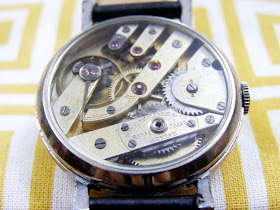







PERSONAL COLLECTION - NOT FOR SALE In 1845, as a result of a conflict with Patek, Czapek withdrew from business. Seeking for a new partner, Antoine de Patek got acquainted with Adrien Philippe, a talented French watchmaker, who boasted a revolutionary invention – a watch mechanism wound without a key. Thus, the company received its “almost” actual name - Patek Philippe & Co, and we gained the opportunity to wind watches without a special key, just by means of a crown. In their partnership, Philippe was responsible for the development and production of new models, and Patek got busy with the sales, traveling around the world and attracting influential customers, including acting monarchs. One of the first timepieces of the new brand was presented to Queen Victoria in 1851, during the Great Exhibition in the Crystal Palace. The success of the legendary watch company Patek Philippe is based on two major principles: commitment to innovation and adherence to traditions. The Patek Philippe watchworks have been repeatedly recognized as the world’s most sophisticated ones. So far, nobody has managed to conquer the peak ofPatek Philippe’s technical celebration – astronomical watch Calibre 89, featuring 33 functions and having 1728 unique parts. The results of testing of watches produced by Swiss companies proved the timepieces of Patek Philippe to be the most accurate annually during the period from 1880 until 1964. In 1868, Patek Philippe presented the first bracelet wristwatch, which is now kept in the company’s museum. This creation was followed by a number of patents and innovations – chronograph, perpetual calendar, minute repeater, etc. In 1932-1933, the company participated in the “watch contest” on the part of millionaire Henry Graves, having realized an ultra-complication pocket watch for him. In 1999, the Graves watch was hammered down for 11,000,000 dollars at Sotheby’s and became the most expensive watch ever sold. In 1901, both founders being dead for many years, the company was renamed to Ancienne Manufacture d’Horlogerie Patek Philippe & Cie, S.A. In 1932, it was purchased by brothers Jean and Charles Stern, who changed the company’s name to the actual Patek Philippe S.A. Patek Philippe, which is constantly striving for perfection, has always been demonstrating its good name. For example, in 1996, the wristwatch Annual Calendar was chosen “Watch of the Year” – it automatically adjusts months (except February) and needs to be manually corrected only once a year. This is how Patek Philippe became the only watch company, whose every timepiece bears the Geneva Seal - the symbol of watchmaking perfection. Not many Swiss watch brands qualify for this desired hallmark. Nowadays, the entire assembly process takes place solely at the Patek Philippe factory in contrast to many Swiss watch companies, which purchase various parts from other factories. The company trains its masters: Patek Philippe’s specialists improve their artistry in the company’s specialized school. As the creation of the simplest gents’ watch takes about nine months, and the most complicated portable timepiece Caliber 89 required nine years of meticulous work. Patek Philippe pays special attention to the design of its creations. Each of the company’s watch collections is based on the finely calibrated, unique, aesthetic principles, which allow these timepieces to remain modern, even if produced several decades ago. Patek Philippe had many celebrities among its clients – from Queen Victoria to Albert Einstein. The Patek Philippe timepieces became the gems of many collections. Lev Tolstoy owned a pocket watch by Patek Philippe. And Tchaikovsky had a gold timepiece with a unique dial and chiseled hands. As of 2009, the company is owned and run by the third and fourth generations of the Stern family – father and son Philippe and Thierry Stern. All factories and the museum are still located in Geneva. The production employs 220 persons. The company’s modern catalogue is represented by 45 serial mechanisms of 23 calibers. Given the exceptionally high prices, the output remains low – over the entire history of the company’s existence, the number of Patek Philippe watches equals to 600,000 pieces.

No comments:
Post a Comment